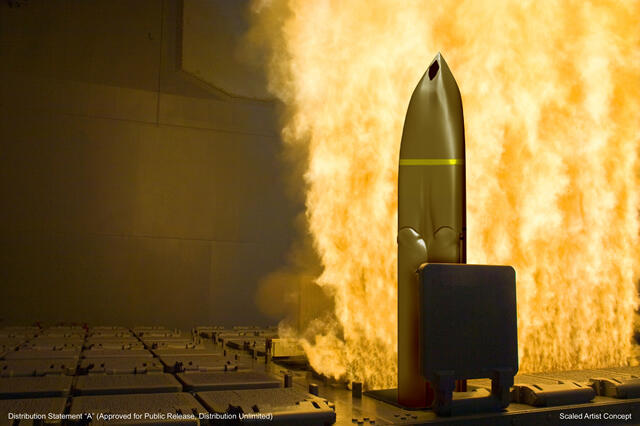TS
wekaweka
Interim Harpoon Replacement?

http://www.navyrecognition.com/index...tem-tests.html
Quote:
Lockheed Martin successfully completed MK 41 Vertical Launch System (VLS) “push-through” testing of a simulated Long Range Anti-Ship Missile (LRASM). Four consecutive tests verified that the simulated LRASM can break or “push through” the MK 41 canister’s forward cover without causing damage to the composite structure, air data probe or coatings of the missile.
The testing was part of a Lockheed Martin-funded shipboard integration effort to prove LRASM can successfully function as an Offensive Anti-Surface Warfare (OASuW) weapon. The push-through testing is an important risk reduction milestone critical to demonstrating LRASM’s surface launch capability.
The testing was part of a Lockheed Martin-funded shipboard integration effort to prove LRASM can successfully function as an Offensive Anti-Surface Warfare (OASuW) weapon. The push-through testing is an important risk reduction milestone critical to demonstrating LRASM’s surface launch capability.

http://www.navyrecognition.com/index...k=view&id=1141
Quote:
The captive carry missions were flown aboard a U.S. Air Force B-1B from the 337th Test and Evaluation Squadron at Dyess Air Force Base, Texas. The primary mission objectives were to collect telemetry for post-flight analysis, verify proper control room telemetry displays and simulate all the test activities that will occur in later air-launched flight tests. All test objectives were met.
“Collecting telemetry data while flying in the B-1B bomb bay significantly reduces risk ahead of the first launch,” said Mike Fleming, LRASM air launch program manager at Lockheed Martin Missiles and Fire Control. “Initial assessments indicate the missile performed as expected.”
The LRASM program is in development with the Defense Advanced Research Project Agency (DARPA) and the Office of Naval Research. After a competition in 2009, Lockheed Martin’s LRASM was selected to demonstrate air- and surface-launched capability to defeat emerging sea-based threats at significant standoff ranges.
LRASM is an autonomous, precision-guided anti-ship standoff missile leveraging the successful Joint Air-to-Surface Standoff Missile Extended Range (JASSM-ER) heritage, and is designed to meet the needs of U.S. Navy and Air Force warfighters in a robust anti-access/area-denial threat environment.
Armed with a proven 1,000-lb. penetrator and blast-fragmentation warhead, LRASM employs a multi-mode sensor, weapon data link and an enhanced digital anti-jam Global Positioning System to detect and destroy specific targets within a group of ships.
“Collecting telemetry data while flying in the B-1B bomb bay significantly reduces risk ahead of the first launch,” said Mike Fleming, LRASM air launch program manager at Lockheed Martin Missiles and Fire Control. “Initial assessments indicate the missile performed as expected.”
The LRASM program is in development with the Defense Advanced Research Project Agency (DARPA) and the Office of Naval Research. After a competition in 2009, Lockheed Martin’s LRASM was selected to demonstrate air- and surface-launched capability to defeat emerging sea-based threats at significant standoff ranges.
LRASM is an autonomous, precision-guided anti-ship standoff missile leveraging the successful Joint Air-to-Surface Standoff Missile Extended Range (JASSM-ER) heritage, and is designed to meet the needs of U.S. Navy and Air Force warfighters in a robust anti-access/area-denial threat environment.
Armed with a proven 1,000-lb. penetrator and blast-fragmentation warhead, LRASM employs a multi-mode sensor, weapon data link and an enhanced digital anti-jam Global Positioning System to detect and destroy specific targets within a group of ships.
SSM sementara sampe SSM hypersonic USN muncul kah?
0
6.2K
Kutip
26
Balasan
Thread Digembok
Urutan
Terbaru
Terlama
Thread Digembok
Komunitas Pilihan